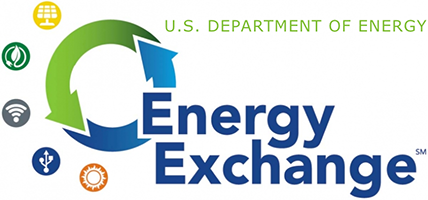Pittsburgh, PA

The National Institute of Standards and Technology (NIST) Risk Management Framework (NIST SP 800-37) was developed in response to the Federal Information Security Modernization Act of 2014, Office of Management and Budget's policies, and other laws. The RMF is a scalable and structured process that aims to help organizations manage security and privacy risks. The RMF process should generate the necessary materials needed (i.e., system security plan [SSP], security assessment report [SAR], and plan of action and milestones [POAM]) for an authorizing official (AO) to grant an authorization to operate (ATO). This session will focus on the basics of the NIST RMF process and walk through preparatory steps than can be taken prior to starting the RMF process and lessons learned from seasoned professionals.
Instructors
Tami Reynolds, Cyber Risk Optimization Group Manager, National Renewable Energy Laboratory, Department of Energy Read Bio
Tami Reynolds is acting Group Manager for the Cyber Risk Optimization Group at NREL. She provides technical leadership in building out and marketing the Distributed Energy Resources Cybersecurity Framework (DER-CF) tool to industry and federal partners. She works closely with partners to develop a deep understanding of applying the Department of Energy (DOE) Cybersecurity Capability Maturity Model (C2M2) and National Institute of Standards Technology (NIST) Cybersecurity Framework to their renewable and distributed energy systems, for the evaluation of cyber and physical security. Reynolds provides leadership in developing the Distributed Energy Resource Risk Manager (DER-RM), an NREL tool that will address the NIST Risk Management Framework with a focus on distributed energy resources. Reynolds also provides support to the U.S. Agency for International Development in developing cybersecurity programs in developing countries. Reynolds's insight and innovative ideas on new efforts are helping to merge cybersecurity and resilience research.
Md Touhiduzzaman, Cyber Security Engineer, PNNL Read Bio
Md Touhiduzzaman is a Cyber Security Engineer in the Electric Security group at the Pacific Northwest National Laboratory with the research focuses on grid cyber system modeling, grid communication network, cybersecurity assessment (CSF, RMF) as well as analysis of cybersecurity consequences and threats on grid. Before joining PNNL, Touhiduzzaman was at National Renewable Energy Laboratory (NREL) as an energy cyber security researcher. In NREL, Touhiduzzaman co-led the research and development of the DER cyber security framework (DER-CF) and DER risk management framework (DER-RM) tools. He also co-led the effort of developing Cyber Value-at-risk framework for hydropower fleet and understanding the security benefit of 5G for DER operation. Touhiduzzaman was at PNNL as a post-doctoral researcher involved in developing risk assessment frameworks for externally exposed energy delivery systems, and conducting research on risk management framework for improving cyber resiliency.
Jim Lutz, Technical VP, Cyber Technology & Services, Risk Management Consulting Read Bio
Jim is the technical lead for the Cyber Operations group at RMC and is a recognized expert in Industrial Control Systems and Operational Technology cybersecurity. Under his leadership, the group has grown significantly to support all aspects of cyber risk management and mitigation, risk/vulnerability assessments (red and blue teams), R&D of vulnerabilities and mitigations, Computer Network Defense (CND), security operations center management, and Incident Response. Jim has over 25 years of experience in risk management, system validation, cybersecurity assessments, penetration testing, and secure software development. Prior to RMC, Jim served in cybersecurity and IA roles at Booz Allen Hamilton, SAIC, SRA International and Sprint. Jim has achieved and maintains CISSP, PMP, GISCP, GRID, CSSLP, CEH, and Security + certifications. He holds a Master of Science in Information Assurance and a Bachelor of Science in Computer Science.
Learning Objectives
Upon completion of this course, attendees will be able to:
- Identify the components of the risk management framework (RMF) process;
- Recognize preparatory steps that can be taken prior to beginning the RMF process;
- Identify important lessons learned from subject matter experts;
- Recognize how to maximize the efficiency and reduce the burden of the RMF process and achieving ATO.









